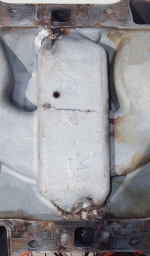akintosyali
New member
My 426 engines, being built in 1965, keep me busy. After a 20 min ride, when we come back to the docks, I need to turn on the blowers to get exhaust smell out of the engine room. I dont get this smell when the engine is idling, at the docks. I get it only when I come back from a trip.
My thought: On both engines, i have a pcv valve on one side and a breather on the other. Breather tube goes to the top of the carb, to the flame arrestor and the pcv goes to a vacuum outlet on the bottom of the carb. The pcv valve works propely, it sucks air and and when I blow on it, it stops 90% of the air flow. (is that good enough??) I heard the pcv valve works good at idle, but as the throttle opens up, the vacuum drops and does not work as well. If that is the case, while underway, the pcv valve should not be sucking any of the fumes?
I tend to smell exhaust after a long trip with load on the engines, so I am wondering it would help if I put breathers on both sides, and take them both to the flame arrestor. Any thoughts on this?
My thought: On both engines, i have a pcv valve on one side and a breather on the other. Breather tube goes to the top of the carb, to the flame arrestor and the pcv goes to a vacuum outlet on the bottom of the carb. The pcv valve works propely, it sucks air and and when I blow on it, it stops 90% of the air flow. (is that good enough??) I heard the pcv valve works good at idle, but as the throttle opens up, the vacuum drops and does not work as well. If that is the case, while underway, the pcv valve should not be sucking any of the fumes?
I tend to smell exhaust after a long trip with load on the engines, so I am wondering it would help if I put breathers on both sides, and take them both to the flame arrestor. Any thoughts on this?


